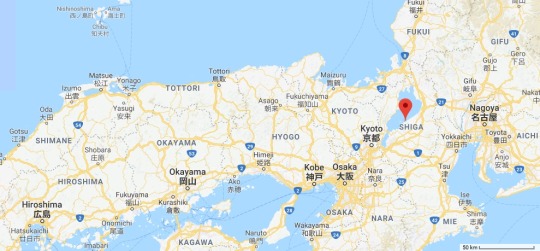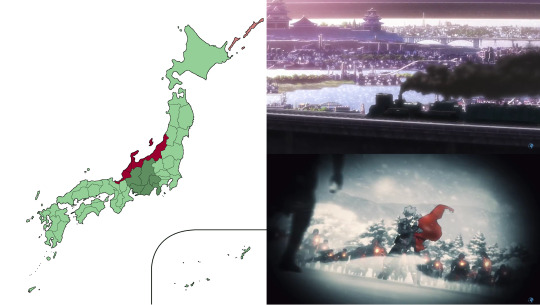#everything from confirmed canon to wild guesswork
Explore tagged Tumblr posts
Text
Time, Calendars & Dates in the World of One Piece

Have you ever wondered when One Piece takes place? Wanted to take a look at a timeline but knew you'd be bombarded with spoilers? Then this is the place for you! I'll be talking about both the anime/manga and the live action, because they differ by a few months.
First things first: The months stay the same! One year consists of twelve months with the same number of days as in our Gregorian Calendar. It's never explicitly confirmed if they're also called January, February etc. but characters' birthdays are listed as (for examle) May 5th by Oda himself. Maybe it's out of convenience, maybe they're actually called the same, who knows. But you can list your characters' birthdays the same as you would if they were born on Earth. Also, the world of One Piece has multiple moons, but the main moon (which is also usually the only one pictured) most likely has either the same or very smilar moon phases to our moon here on Earth.
But now for the a little more complicated part: Which year are we in? Well, we can't tell for sure, but we can make assumptions.
Regarding what calendar the One Piece verse goes by, there are two calendar systems. One is the Age of Heaven and one is the Age of the Sea Circle. The Age of Heaven only has very vague info on it available and we don't have any way of converting canon events into its calendar, so it's no use for our purposes here. However, the Age of the Sea Circle has one confirmed year that we can use to roughly calculate everything else. It comes from an explorer's logbook dated 1120. We know that the events described in this logbook happened roughly 400 years before the Straw Hats travel the seas, so we can declare that the main story of One Piece takes place in the 16th century.
From then on, it's guesswork. A lot of people, myself included, assume that Gold Roger died in the year 1500 so that the beginning of the Great Age of Pirates could be at the start of a new century. It would fit Oda as an author and it would fit Roger as a character, because he would be dramatic like that. He knew what he was doing when he got executed that day, and it's very obvious in the Live Action that he did. It'll become even more obvious later in the story, you'll see! Anyways: Because Gold Roger's execution happened 22 years before Luffy set out to sea at the beginning of the East Blue Saga, Luffy's journey would then start in the year 1522.
But we can get even more exact. At least in the Live Action. In the anime/manga, everything's a little blurry. All we know for sure is that Luffy sets out to sea either on or after his birthday on May 5th. From then on, it's all guesswork based on how many days we see pass in the story and how many may have passed.
In the Live Action, things are a lot easier, because we're explicitly told that it's Kaya's birthday on the day the Straw Hats arrive in Syrup Village. Kaya's birthday is confirmed to be August 24th, so the Straw Hats arrive at Syrup Village on August 24th 1522 in the Live Action.
So, now that we've declared where we are chronologically, here are some important birthdays according to the calculation I just explained:
The Straw Hats
Monkey D. Luffy: May 5th 1505 (17 years old, youngest Straw Hat)
Roronoa Zoro: November 11th 1502 (19 years old, oldest Straw Hat)
Nami: July 3rd 1504 (18 years old)
Usopp: April 1st 1505 (17 years old)
Sanji: March 2nd 1503 (19 years old)
Bonus Tumblr beloveds:
Shanks: March 9th 1485 (37 years old)
Mihawk: March 9th 1481 (41 years old - yes he shares his birthday with Sanks, I was just as surprised; what a wild day for the One Piece world)
Buggy: August 8th 1485 (37 years old)
I hope this little guide is helpful to you! Don't be shy to ask for any dates you'd like to know, I'll calculate them for you or make an estimate if they can't be pinned down.
10 notes
·
View notes
Text
Koutetsujou no Kabaneri: Geographical Locations
(sorry this is super long but I can’t use a Read More because of the damn apostrophe glitch...)
In the absence of a proper map of Hi-no-Moto, I thought it’d be useful / interesting to compile all the information and theories I know of concerning the location of stations etc in order to try and map the journey of the Koutetsujou throughout the series and beyond. If you happen to have any contributions or corrections then please add to this list! I’m also interested in hearing guesses other than my own for stations that were seen or visited along the way that don’t have a confirmed location.
To start with, Aragane Station.

Aragane Station is located within Izumo Province (confirmed in prequel novel), ‘an old province of Japan which today consists of the eastern part of Shimane Prefecture,’ within the Chugoku Region. (The map shows Japanese provinces in 1868, at the end of the Edo Period.) Aragane is the location of the opening of the anime series, and after it is overrun the main characters decide to head towards Kongoukaku aboard the Koutetsujou.
(I’ll cover Kongoukaku later on, but for now let’s assume that the assumption of the Japanese fandom is correct and that it’s further east than Aragane.)
Prior to the Koutetsujou’s arrival at Aragane Station, it travels past Hayatani Station, which has fallen to the kabane. I don’t know of an exact location for this station, but given that we know Mumei is heading towards Kongoukaku, it is likely to be located to the west of Aragane.
Following the departure of the Koutetsujou from Aragane Station, the next stop is Yashiro Station (and I hope you’re ready for speculation because again, I haven’t seen any official info regarding location).
There was previously a town named Yashiro that merged with two other towns to become the city of Kato in Hyogo Prefecture, so I decided to look into that location as it lies between Aragane’s location and where Kongoukaku is likely to be. The Koutetsujou’s journey to Kongoukaku involves the risky decision to take a route through the mountains in order to reach their destination faster, and looking at a map that shows the topography, Yashiro / Kato is a potential fit, though possibly a little too far south (and perhaps just too far). As an alternative, there is the site of Yanahara Mine, but although geographically it looks promising, after checking details I’m not truly convinced (it primarily produced copper and wasn’t operational until some time in the 1950s).
(If you’re interested, you can see the distance between an approximate location assigned to Aragane Station and the mine site here, it’s worth toggling on the ‘terrain’ option too.)
After leaving Yashiro Station, the next stop is Shitori Station (no information about location, let me know if you have any ideas).
The last stop before Kongoukaku is Iwato Station. This station functions as a ‘gate’ that controls access to the Shogun’s stronghold (at least from the east) but that doesn’t necessarily mean it’s as close in proximity to Kongoukaku as it first seems, only that the sole way to reach Kongoukaku from that direction by rail involves being permitted to pass through Iwato.
And that brings us to Kongoukaku itself.

There is no confirmed canonical location for Kongoukaku, but Japanese fans consider it to be built near Lake Biwa, like Oda Nobunaga’s Azuchi Castle, while the design of the stronghold itself is modelled on Goryoukaku, with the shape being hexagonal rather than pentagonal (see images above).

This map gives some idea of distance from Aragane Station (somewhere in the east of Shimane prefecture) to Kongoukaku (eastern shore of Lake Biwa). Total distance as the crow flies is around 300km, but the actual journey in the series would of course be longer as their route was not direct.
I placed the marker on the map above at the location of the site of Lake Dainaka (now reclaimed land), as I’ve seen it suggested that this lake is the one Kongoukaku uses as its moat (either that or another of the nearby lakes existing at the time). For a closer look at the size and position of this lake, there’s a useful map here, look for 大中湖. The water of this lake was only 2.7m at its maximum, a shallowness that would allow it to be built on.

The Wadatsu Oohashi (Great Wadatsu Bridge) that Biba mentions in episode 10 is equivalent to the Biwako Oohashi, though if the location is the same, the site of Kongoukaku doesn’t precisely match that of Lake Dainaka as that’s not directly opposite the modern day bridge.
(I was also wondering when Ikoma falls out of the train after being stabbed, whether the water he falls into is Osaka Bay. There are actually a few modern train lines that run along that stretch of coastline before routes veer inland towards Lake Biwa.)
So, that concludes the named locations in the anime series.
...but I’m not finished yet!
As you know, the game (Koutetsujou no Kabaneri: -Ran- Hajimaru Michiato) is due to be released later this year, and this article gave some information about the setting for the game’s events. With the fall of the Amatori Shogunate that governed the west of the country, the characters continue eastwards, with the game taking place in the region of Hokuriku, along the northwestern coast in Honshu.

(The map shows Hokuriku in red and the Chubu region that it is part of in darker green.)
I think we can expect a couple of things from this; sea and snow. Hokuriku lies right along the Sea of Japan, and has ‘the highest volume of snowfall of any inhabited and arable region in the world’ (source). The home station of the game’s three new characters is 勝木駅 , which Google Translate has as Katsuki Station (it could potentially be Gatsugi Station instead), but although it must be somewhere within this region, I don’t know exactly where.
That brings us to the next installment in the story after the game, a movie with the title of Koutetsujou no Kabaneri: Unato Kessen, set to be released in 2018. So far, very little is known about it other than that it’s set 6 months after the end of the anime series. The teaser video shows some unknown locations and characters but doesn’t give much away, making it hard to speculate about geographical location.
...but how about this?
I don’t think it’s likely that the Koutetsujou will return the way they came just yet (though if the story has a good end, then surely the reopening of Aragane station will require it eventually) so let’s assume they continue in the direction of travel we’ve seen so far.
海門 / Unato is left untranslated in the title (Koutetsujou no Kabaneri: Unato Decisive Battle) so I’ve assumed that’s a place name.
A search for ‘unato’ gives no real results (and nothing that matches the kanji) but if you choose to search instead for the kanji themselves then that gives ‘kaimon,’ a literal translation of which is ‘sea gate’. So, kaimon is a ‘strait’ or a ‘channel’ (check it out on Jisho and have a look at this list of straits of Japan). I obviously don’t know whether this holds any meaning for what we’re going to see in the movie, but what if it did? I’ve often wondered where the kabane outbreak first began in Hi-no-Moto, and I’m quite partial to the idea that it arrived in Kyushu and spread from there. The eastern region of Hi-no-Moto apparently has better technology (it’s the source of the blueprint for Ikoma’s mechanical arm) and I wonder whether that’s partly because the people there had longer to develop such things before the kabane reached them, and perhaps continued trade with other countries for longer (while the fearful and soon to be kabane-infested west, under the rule of the Shogun, would undoubtedly have closed the ports and focused solely on the building of walled stations to hide inside rather than pursue the means with which to fight the kabane, whether that be technological advancement or trade / info from abroad).
And it made me wonder about the furthest end of the country from Kyushu, the island of Hokkaido. Hokkaido is separated from Honshu by the Tsugaru Strait, which is 19.5km at its narrowest point.
...what if the people of Hokkaido were able to prevent the kabane from crossing the strait? The distance between may be enough (it was found to be a zoogeographical boundary). And if not that, what if they have some other reason for refusing to allow access to those trying to cross it? (I mean, you can go wild with speculation here... I wonder whether foreign countries have had more success in blocking or exterminating the kabane or even developing medicine or a way to control / use the kabane... It’d be kind of ironic if, as well as the kabane themselves, Ikoma and co. have to deal with an invading or occupying force who want the land for themselves.)

(...the only glimpse of water in the Unato Kessen teaser)
I could certainly see there being some kind of unique situation in Hokkaido that the main characters aren’t yet aware about, thanks to both its own geography and the Shogun’s attitude towards the sharing of information. Either way, I hope the continuation of the Koutetsujou’s journey will lead to some answers and hopefully a cure.
#kabaneri of the iron fortress#koutetsujou no kabaneri#long post#i mean seriously long post#everything from confirmed canon to wild guesswork#there's not much support for the unato kessen theory#but the geographical progression seems to fit#let me know what you think!
17 notes
·
View notes